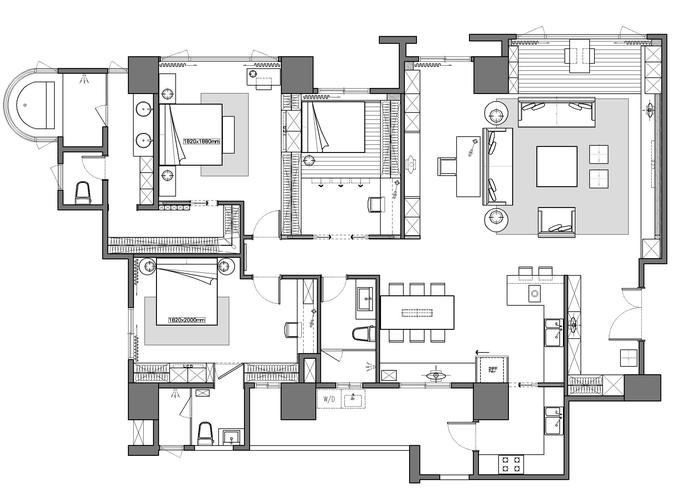家具布置尺寸图
Optimizing Furniture Layout: Algorithms and Best Practices
Designing an optimal layout for furniture involves a delicate balance of aesthetics, functionality, and spatial constraints. Whether you're arranging furniture in a living room, office, or any other space, employing algorithms can streamline the process and ensure efficient use of available space. In this guide, we'll explore various algorithms and best practices for furniture layout optimization.
Understanding the Problem
Before diving into algorithms, it's essential to grasp the key aspects of the problem:
1.
Available Space
: Determine the dimensions and shape of the room where the furniture will be placed. Consider architectural features like doors, windows, and columns.2.
Furniture Dimensions
: Gather accurate measurements of each furniture piece, including width, depth, and height. This information is crucial for ensuring that furniture fits appropriately within the space.3.
Functional Requirements
: Identify the primary functions of the space and prioritize furniture arrangement accordingly. For example, in a living room, seating areas should facilitate conversation and accommodate traffic flow.4.
Aesthetic Considerations
: Take into account the overall design style and desired ambiance. Furniture arrangement should enhance the visual appeal of the space while reflecting the user's preferences.Algorithmic Approaches
Several algorithmic approaches can be employed to optimize furniture layout:
1.
GridBased Layout
: Divide the room into a grid and assign each grid cell a binary value indicating occupancy. Use techniques such as backtracking or genetic algorithms to iteratively place furniture pieces within the grid while avoiding collisions and maximizing space utilization.2.
GraphBased Methods
: Represent the room and furniture pieces as nodes in a graph, with edges indicating possible placements. Employ graph traversal algorithms like breadthfirst search or simulated annealing to explore feasible furniture arrangements and identify optimal solutions.3.
Constraint Satisfaction
: Formulate the furniture layout problem as a constraint satisfaction problem, where each constraint represents a spatial requirement or preference (e.g., distance between furniture pieces). Apply constraint satisfaction algorithms like constraint propagation or backtracking to find valid arrangements satisfying all constraints.4.
Machine Learning Techniques
: Utilize machine learning algorithms, such as reinforcement learning or genetic programming, to learn optimal furniture layouts from historical data or user preferences. Train models on annotated datasets and finetune them to generate personalized furniture arrangements.
Best Practices
In addition to algorithmic approaches, adhering to best practices can enhance the effectiveness of furniture layout optimization:
1.
Prioritize Functionality
: Arrange furniture to facilitate smooth traffic flow and support the intended activities in the space. Consider ergonomic principles to ensure comfort and usability.2.
Maintain Balance
: Distribute furniture evenly throughout the room to create a harmonious layout. Avoid overcrowding one area while leaving other areas underutilized.3.
Consider Sightlines
: Arrange furniture to optimize sightlines to focal points such as televisions, fireplaces, or scenic views. Ensure that seating arrangements promote social interaction and conversation.4.
Maximize Multifunctionality
: Choose versatile furniture pieces that serve multiple purposes, such as sleeper sofas or storage ottomans. This maximizes functionality while minimizing clutter.5.
Experiment with Layouts
: Don't hesitate to experiment with different furniture arrangements before settling on a final layout. Use visualization tools or mockups to preview how furniture will look in the space.6.
Adapt to Constraints
: Be flexible and adaptable when designing furniture layouts, especially in constrained spaces or irregularly shaped rooms. Consider unconventional solutions to make the most of available space.Conclusion
Optimizing furniture layout involves a combination of algorithmic techniques and practical considerations. By understanding the problem domain, employing suitable algorithms, and adhering to best practices, you can create wellorganized and aesthetically pleasing arrangements tailored to specific spaces and user needs. Whether you're designing a cozy living room or a functional office layout, the principles outlined in this guide will help you achieve optimal results.
本文 山东汇功建设 原创,转载保留链接!网址:https://sdhuigong.com/post/16195.html
若侵犯了您的权益,请联系我们处理,谢谢!联系QQ:2760375052








